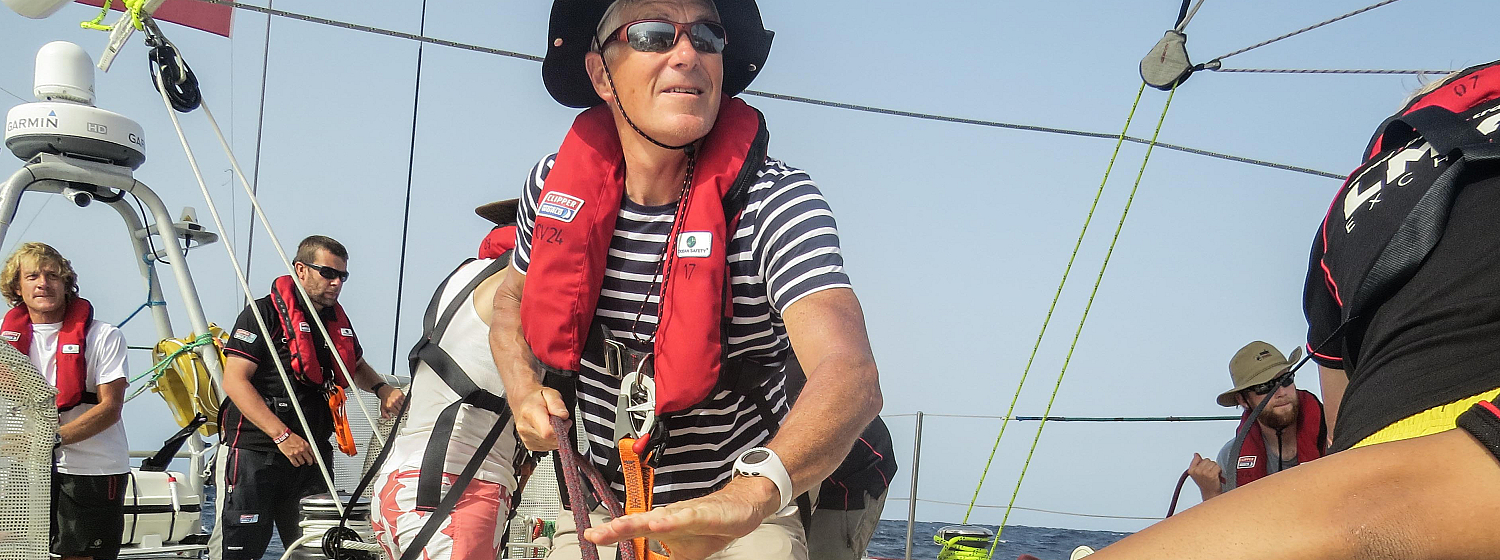Race 1 Day 14: Tropical weather tests teams as the Doldrums await
14 September 2015
The teams are studying weather files carefully as they approach the Inter Tropical Convergence Zone (ITCZ), known as the Doldrums amongst sailors, and the Doldrums Corridor.
The ITCZ is a low pressure belt near the Equator where the northeast and southeast Trade Winds come together creating extremely light airs.
Lots of squall activity is being reported which can add to or cancel out the wind, making conditions very fluky and challenging for the crew as they try to keep the yacht moving.
The racing rules have introduced a method for avoiding the fleet being trapped for many days in the ITCZ, as happened in the previous edition of the Clipper Race. When the teams reach the ‘Doldrums Corridor’, which has the four virtual waypoints, Doldrums Corridor NW, Doldrums Corridor NE, Doldrums Corridor SW and Doldrums Corridor SE at each corner, each yacht will be allowed the use of its engine for a maximum of 6 degrees of latitude or an elapsed time of 60 hours, whichever occurs first.
Race Director Justin
Taylor explains: “LMAX Exchange crossed 12 degrees N at 0046 UTC, entering the extreme north easterly corner of
the Doldrums Corridor, at which time it started to motor-sail. It now has
60 hours to reach 6 degrees N. If it arrives at 6 degrees N before 60 hours has elapsed
then it must remain in that arrival position until 60 hours has passed. LMAX Exchange, like the rest of the
fleet, is free to move east or west in the Doldrums Corridor.”
Click here to read Race Director Justin Taylor's in depth explanation on the Doldrums Corridor rule.
Olivier Cardin, Skipper of LMAX Exchange, described the conditions and challenges of the ITCZ: “This began this morning with lightning on the horizon and as we were getting closer, the wind began to get crazy. First it dropped, then it came from one direction for ten minutes, and then changed to another ten minutes later. We tried to manage that with our mainsail and Yankee 1. It was impossible to fly a spinnaker with this shifty wind.
“Then came the tropical rain with lightning and thunder. It is always a little bit scary to sail in the middle of that. The rain got very heavy. After this big squall, the wind came back, light in a steady direction allowing us to sail at a decent speed for six hours. In the evening, the wind dropped again but without squalls this time. The night was very calm, sometimes a light wind pushed us a bit, sometimes we were drifting with nothing we could do.”
Huw Fernie, Skipper of Visit Seattle, in sixth, has also been contending with squalls as the team approaches the ITCZ.
“We have a section of ocean where the wind is not too strong, the waves are not too big and the going is good. The new challenge that shows up every now and again are the squalls, which can add to or cancel out the wind we have, as well as change its direction and maybe bring rain too - you never know until they are with you.
“As I write we have been met by one: wind speed up, visibility down, rain. We've had an amazing run since the Canary Islands as our nearest competition was left in less wind behind us, now it looks like our runaway story of the last few days is over. We are soon to be out of this wind and are heading for a lighter patch, while those chasing will be getting progressively better winds.”
ClipperTelemed+ Skipper Diane Reid took advantage of steady conditions and sun and taught the crew how to use a sextant to navigate using the sun and stars. See her Skipper blog for more.
For the latest updates, see the Race Viewer here
Join The Race